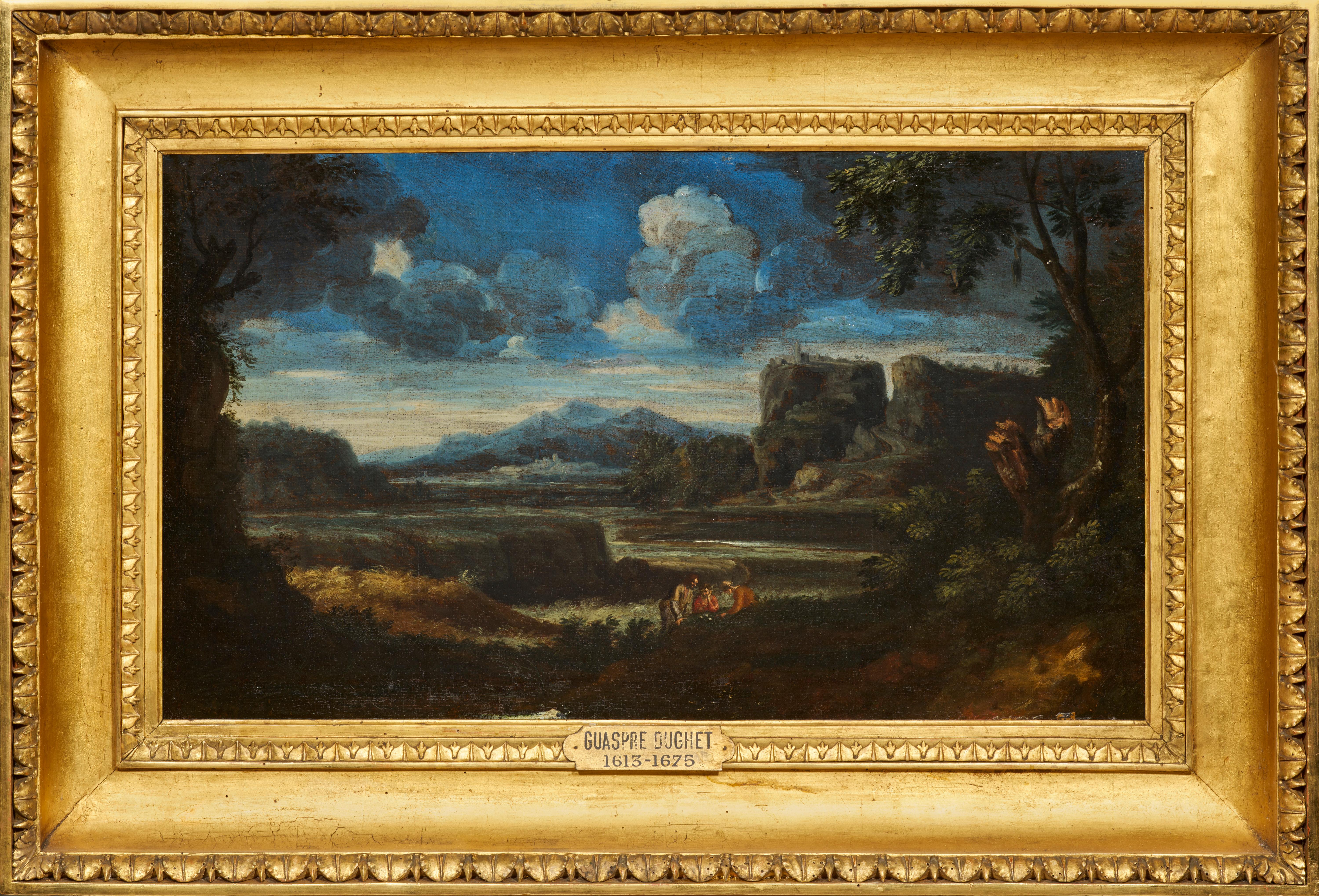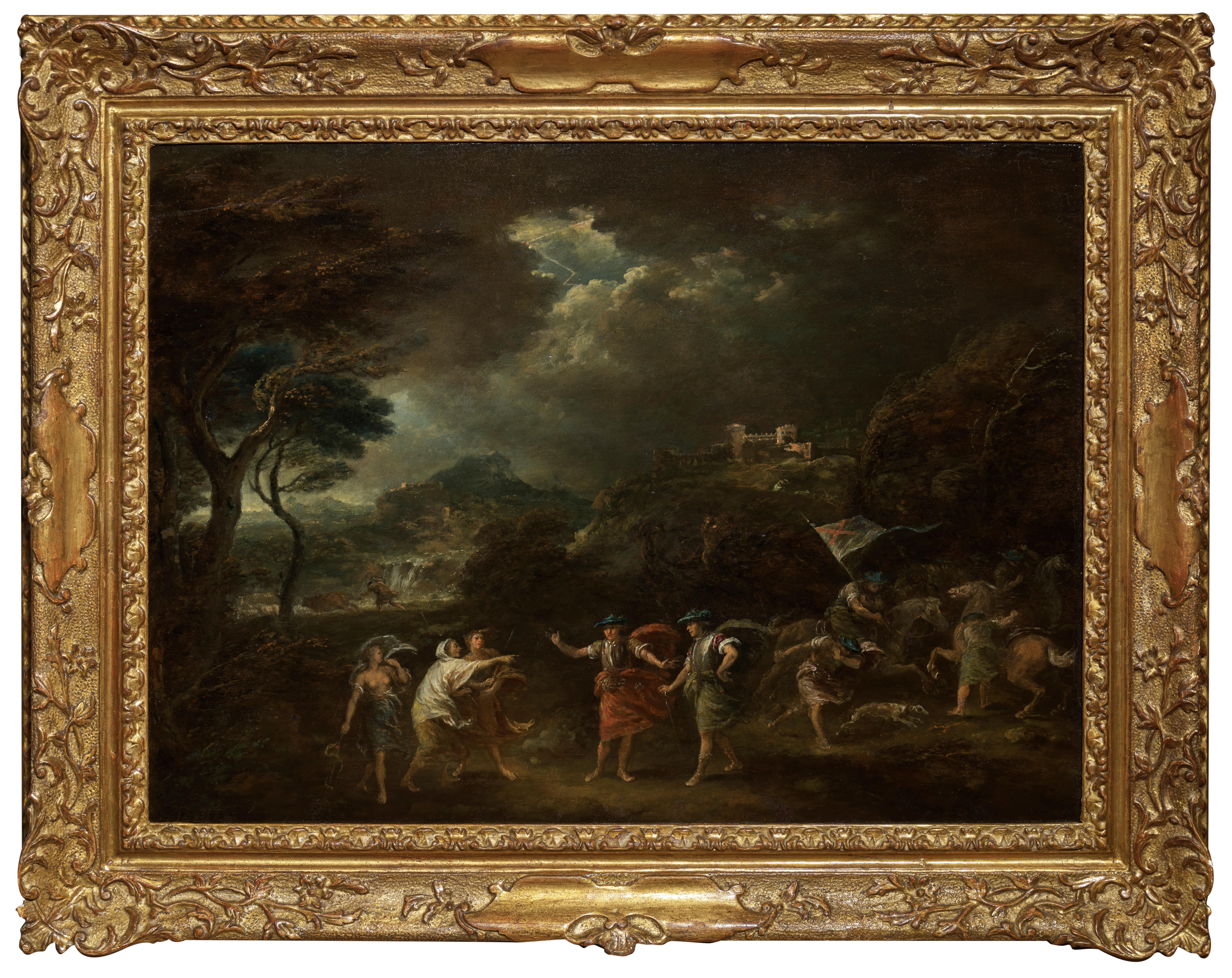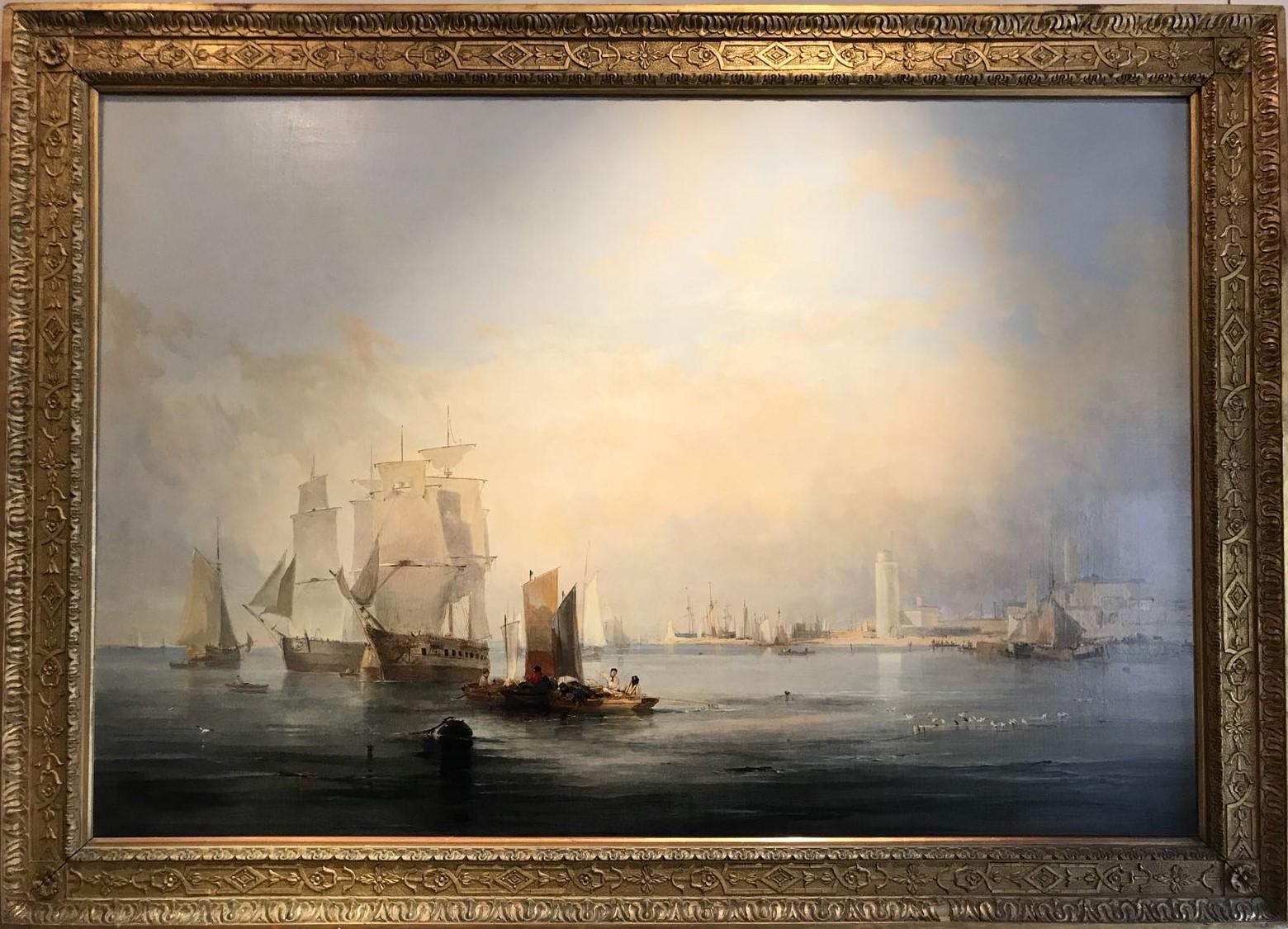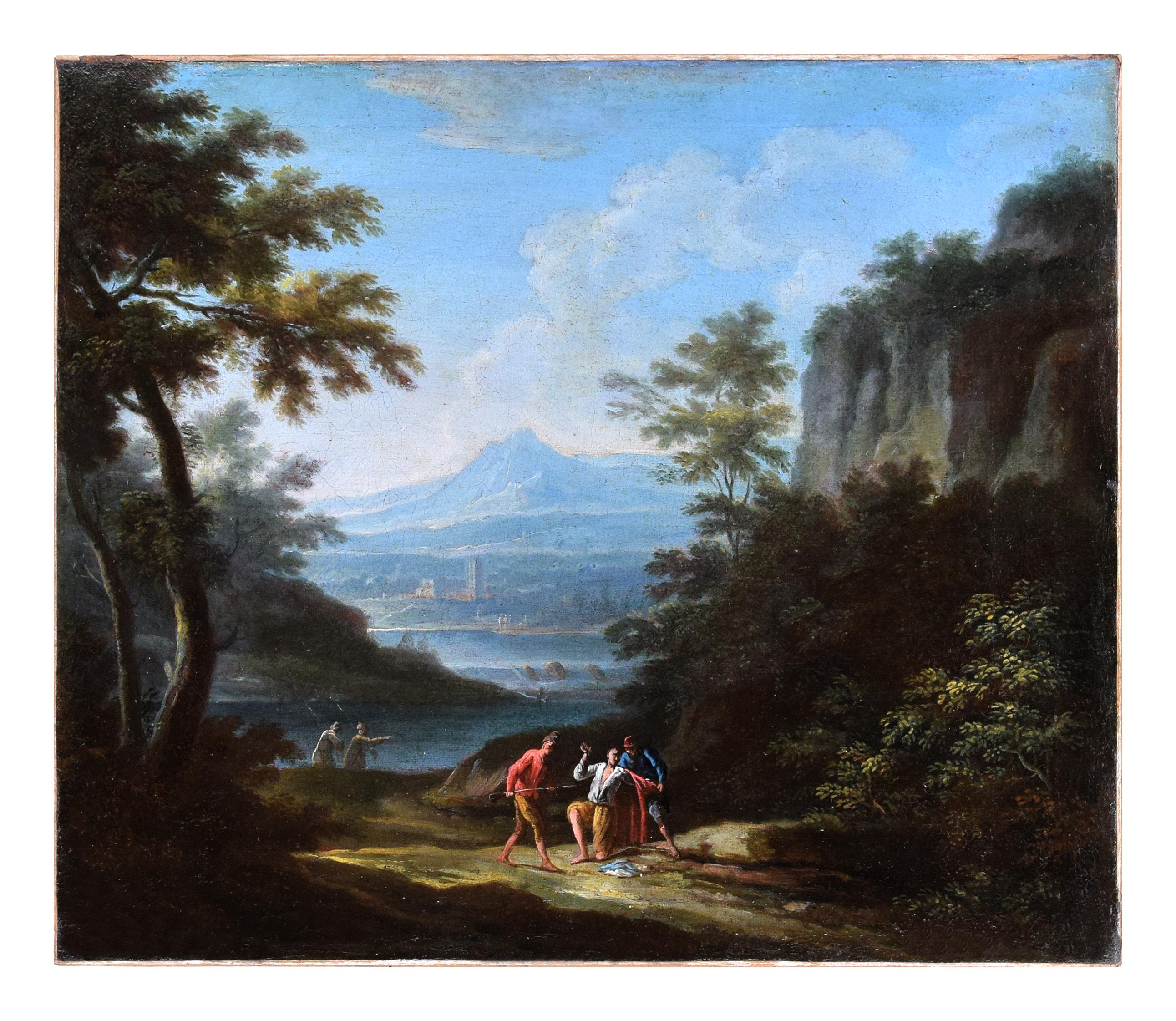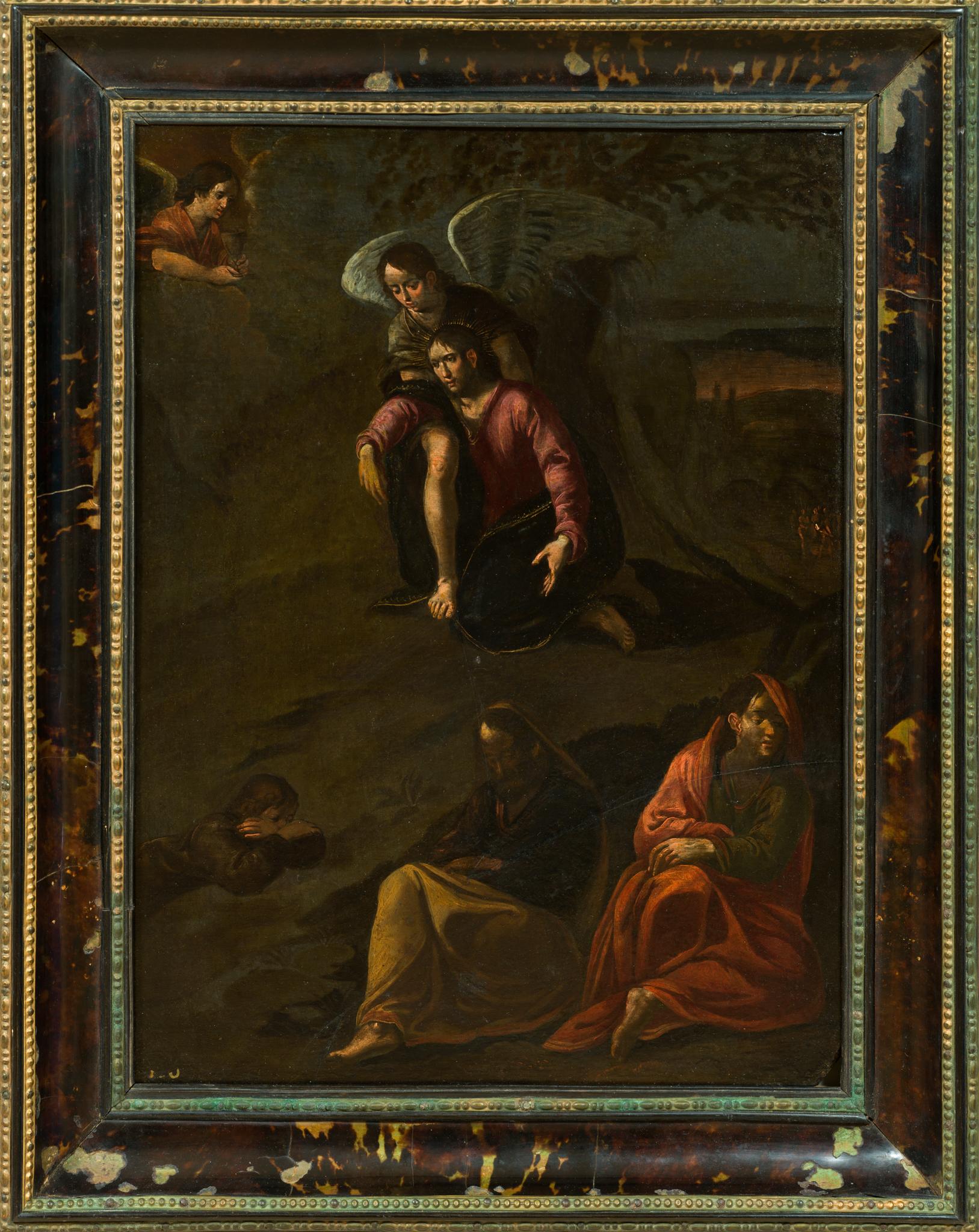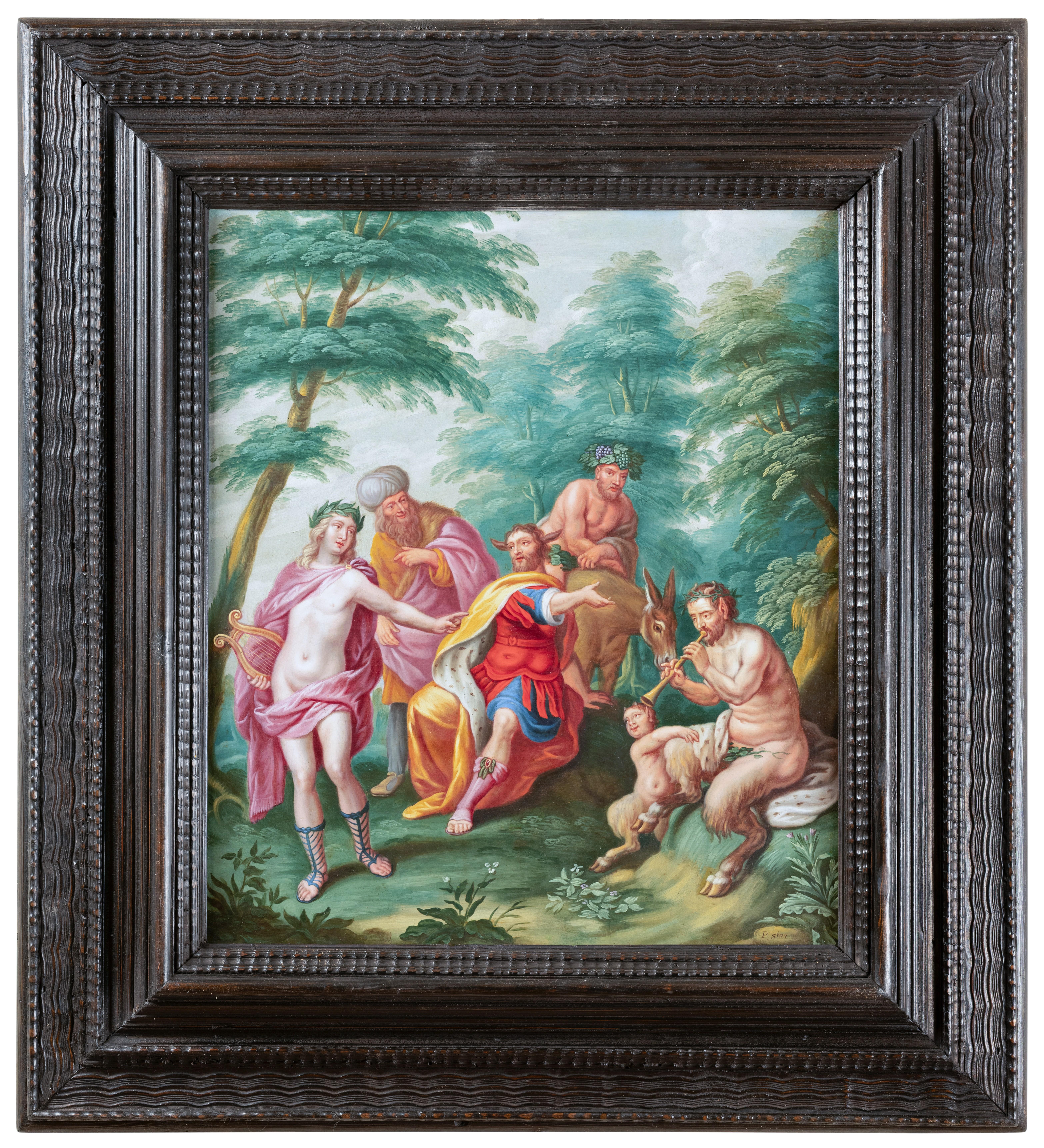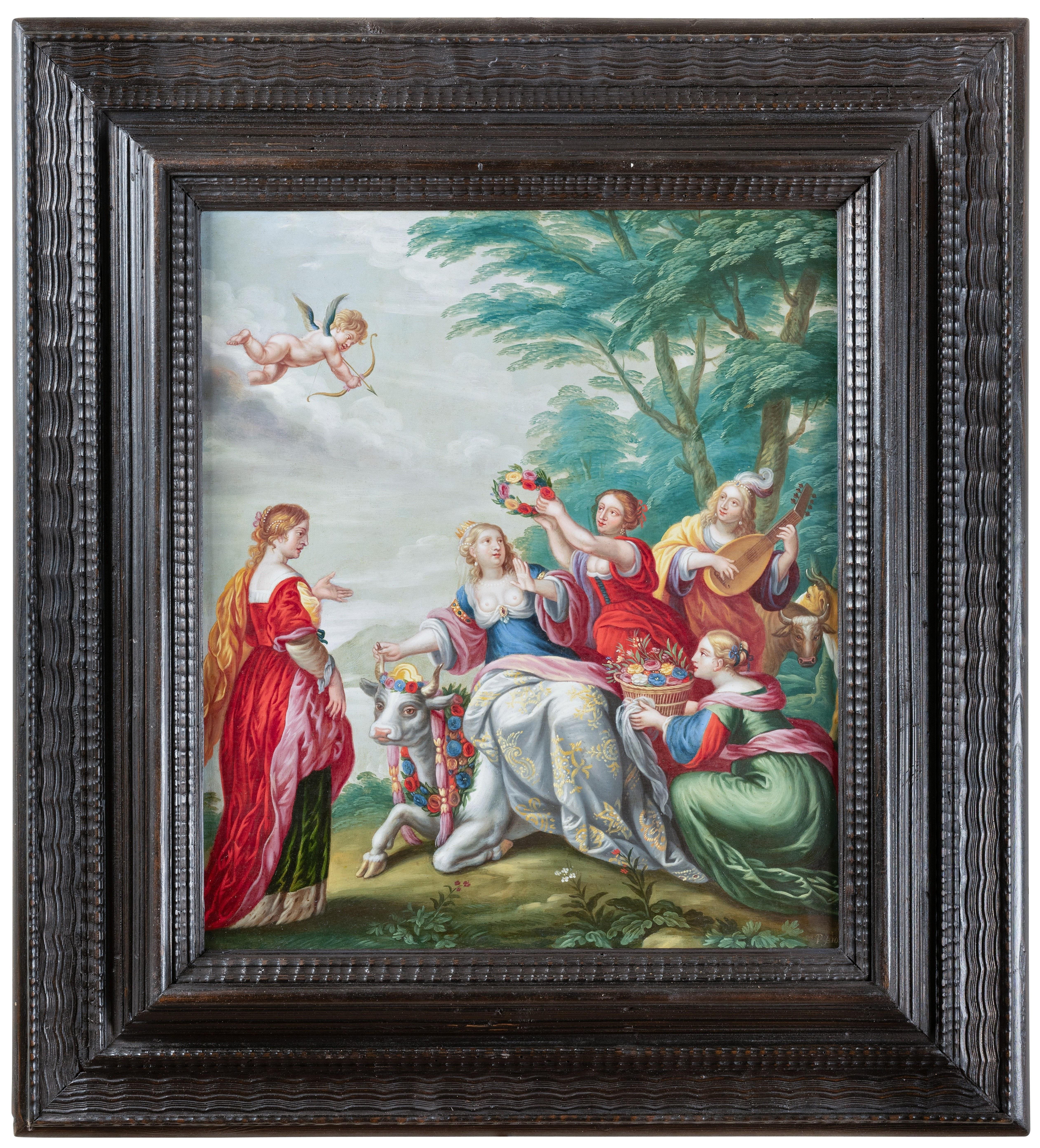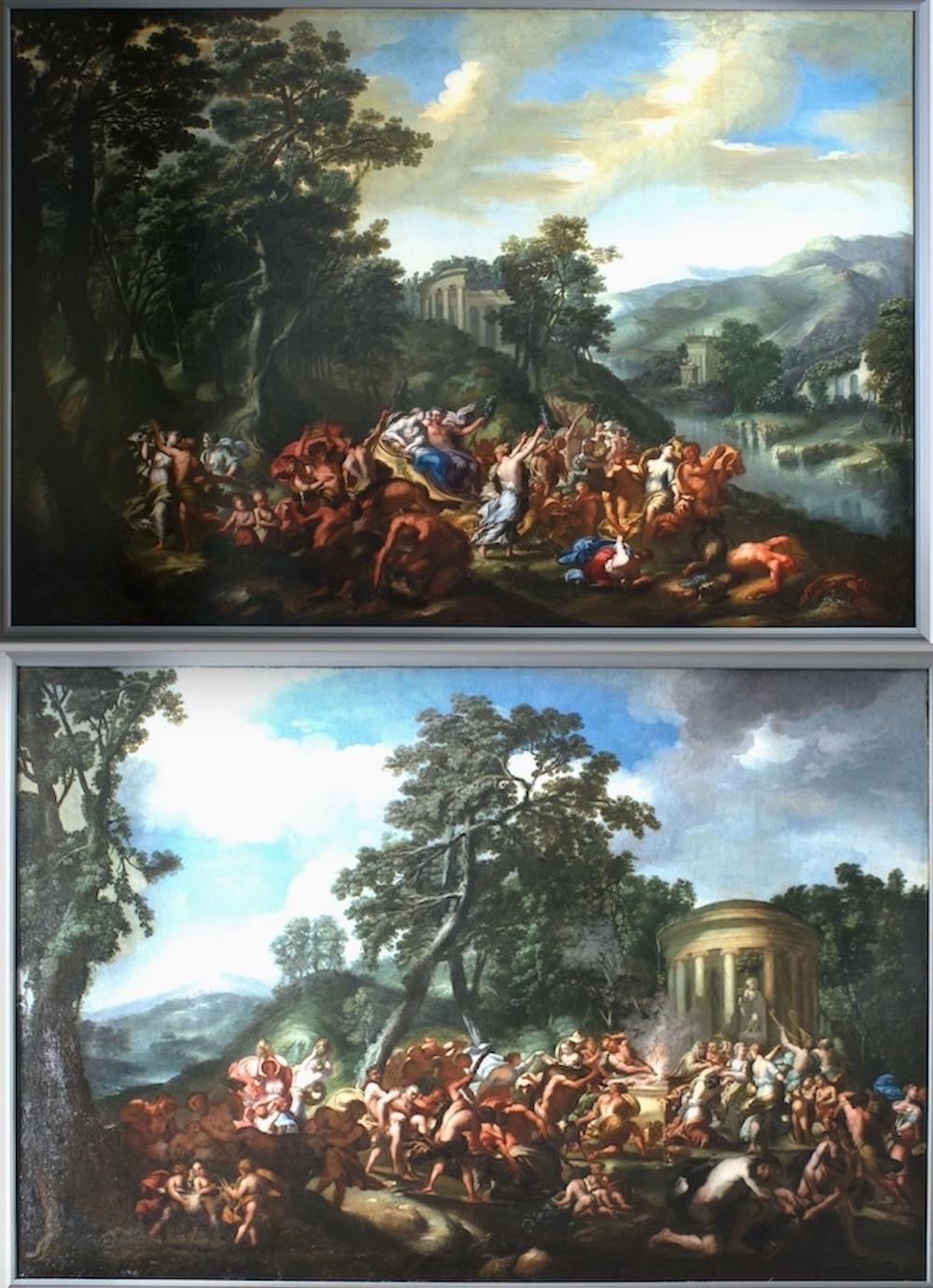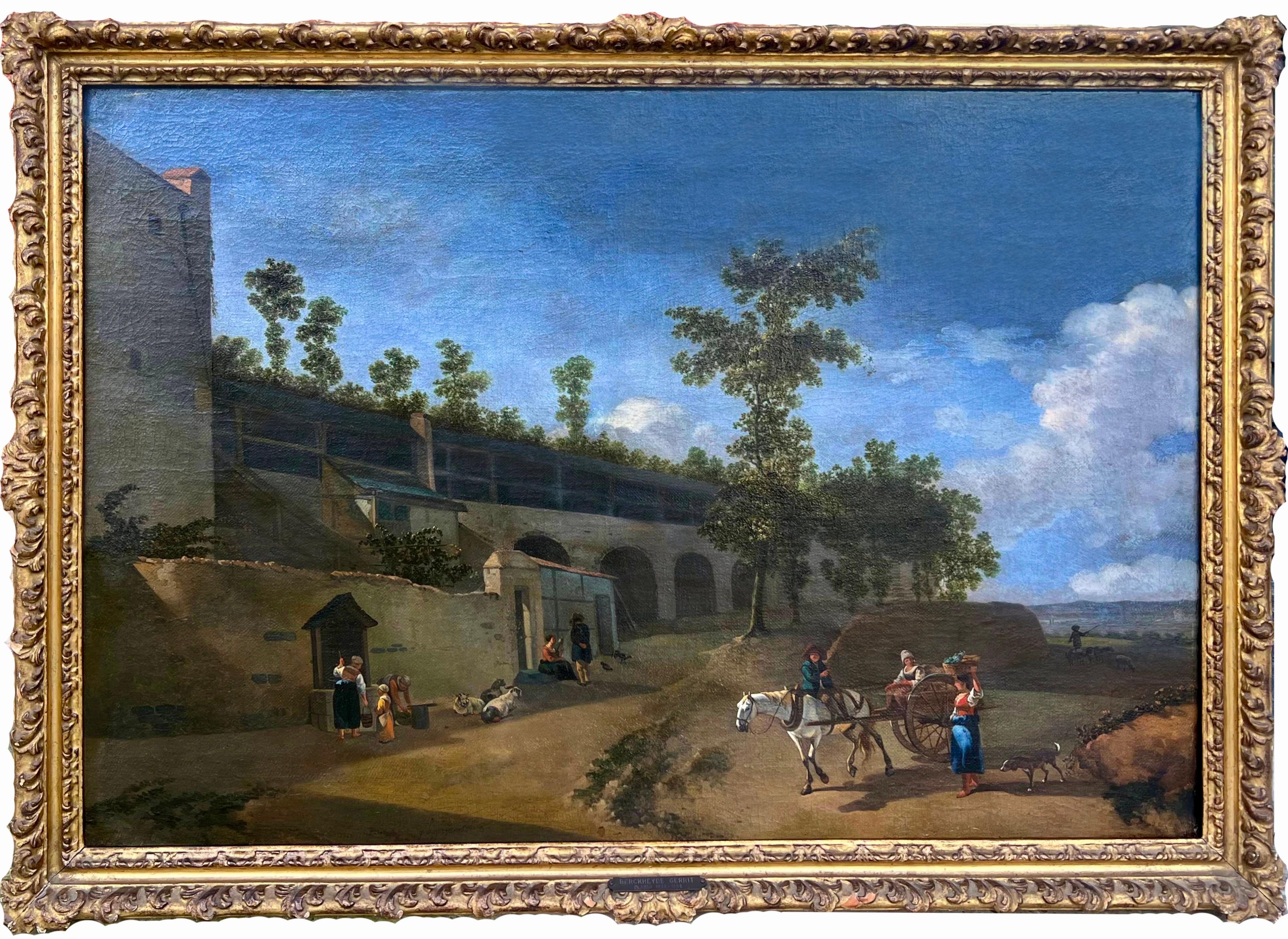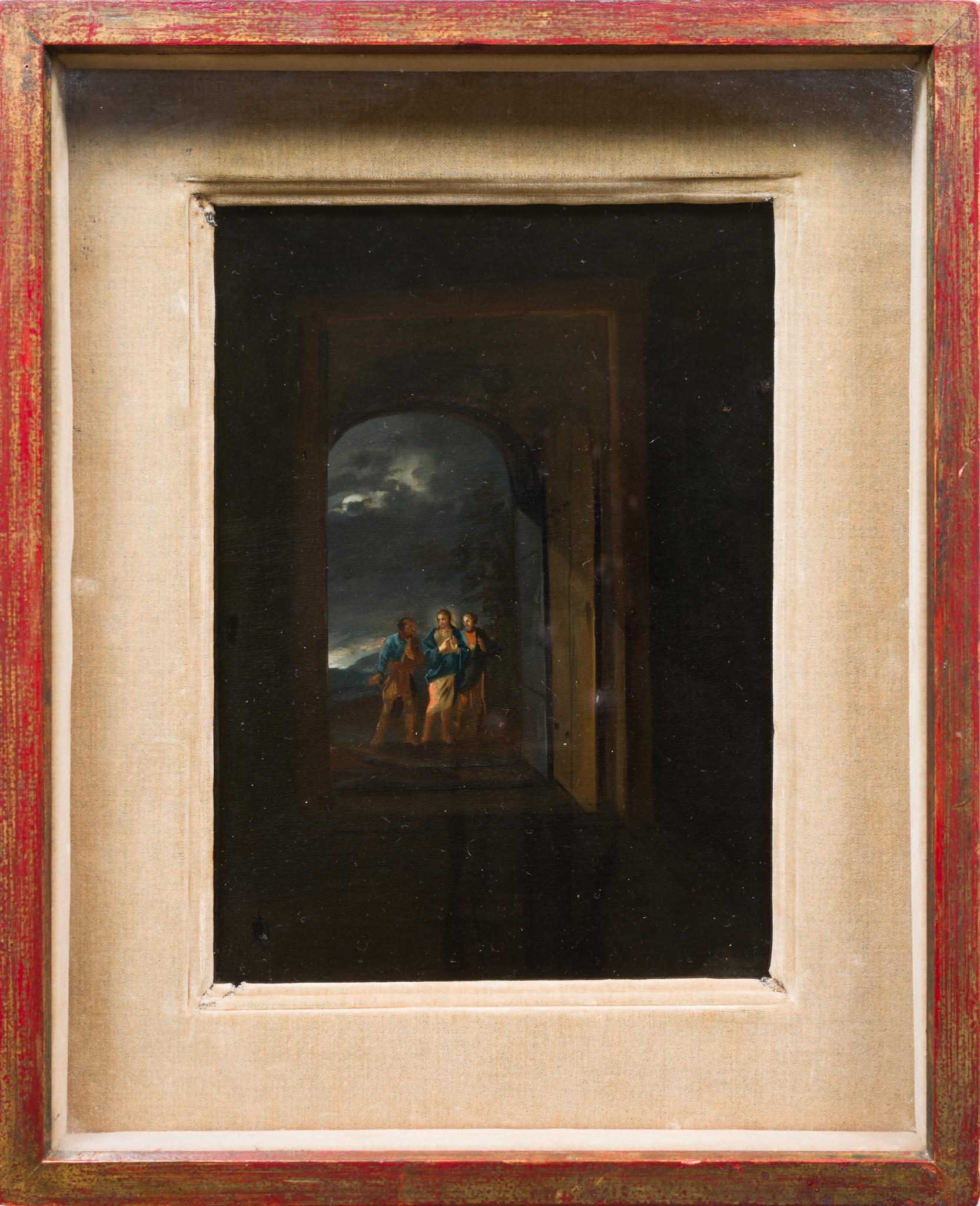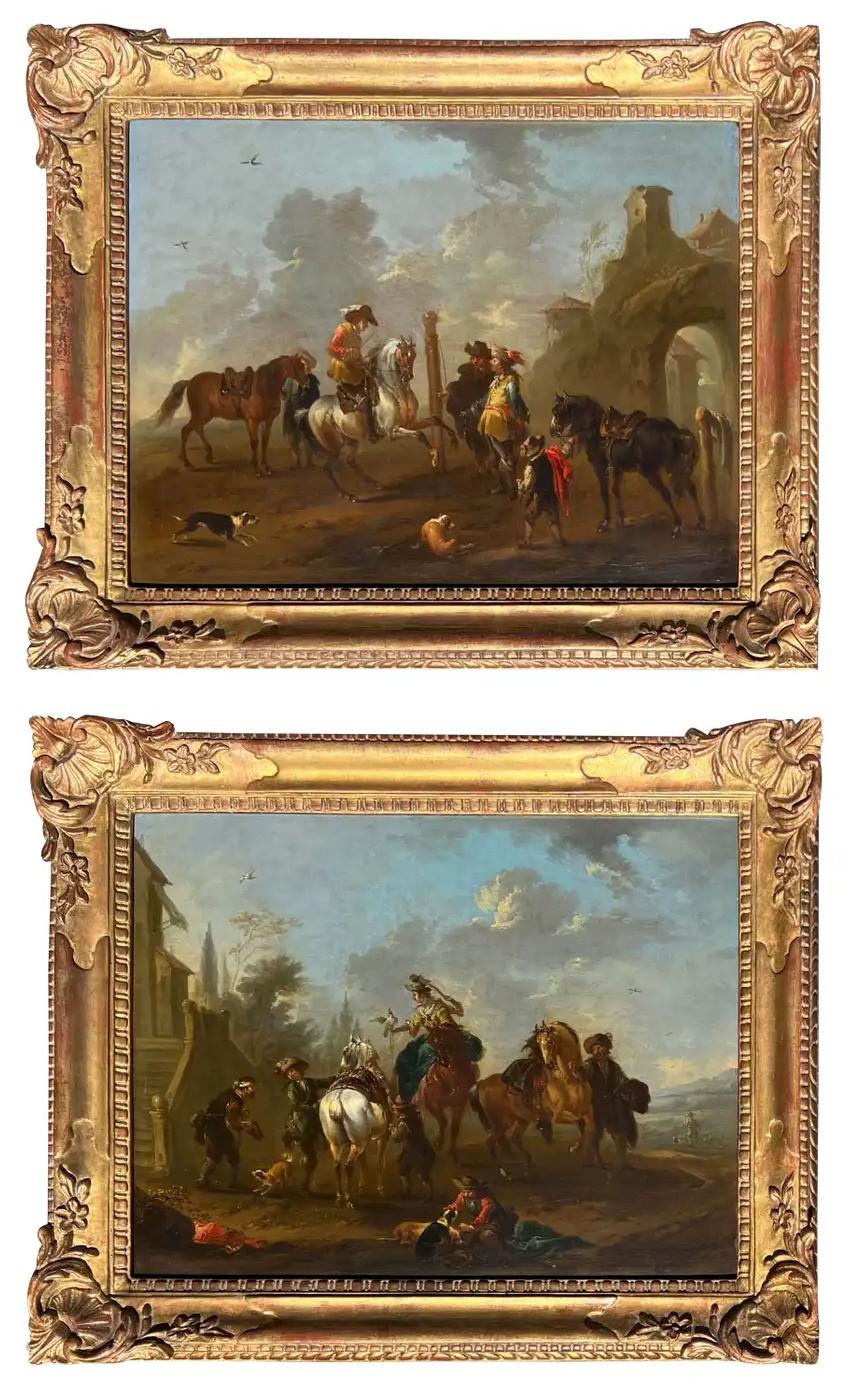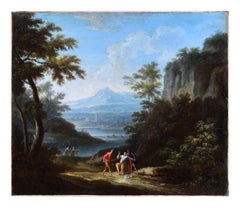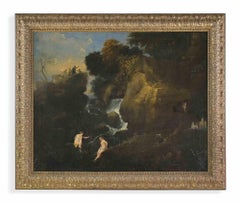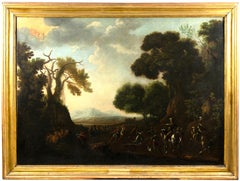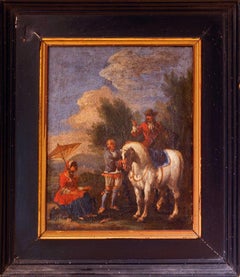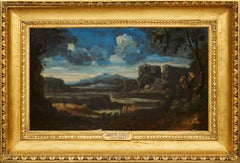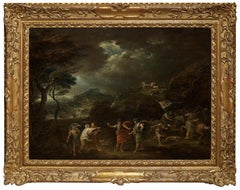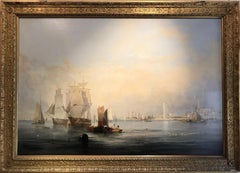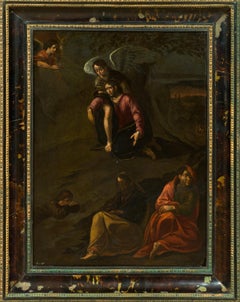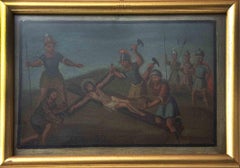
Way of the Cross - XI - Oil Painting - 17th Century
View Similar Items
Want more images or videos?
Request additional images or videos from the seller
1 of 2
UnknownWay of the Cross - XI - Oil Painting - 17th Century17th Century
17th Century
About the Item
- Creation Year:17th Century
- Dimensions:Height: 7.09 in (18 cm)Width: 10.04 in (25.5 cm)Depth: 0.08 in (2 mm)
- Medium:
- Movement & Style:
- Period:
- Condition:Insurance may be requested by customers as additional service, contact us for more information.
- Gallery Location:Roma, IT
- Reference Number:Seller: T-1294821stDibs: LU65039710862
About the Seller
4.9
Platinum Seller
Premium sellers with a 4.7+ rating and 24-hour response times
1stDibs seller since 2017
7,506 sales on 1stDibs
Typical response time: 2 hours
Authenticity Guarantee
In the unlikely event there’s an issue with an item’s authenticity, contact us within 1 year for a full refund. DetailsMoney-Back Guarantee
If your item is not as described, is damaged in transit, or does not arrive, contact us within 7 days for a full refund. Details24-Hour Cancellation
You have a 24-hour grace period in which to reconsider your purchase, with no questions asked.Vetted Professional Sellers
Our world-class sellers must adhere to strict standards for service and quality, maintaining the integrity of our listings.Price-Match Guarantee
If you find that a seller listed the same item for a lower price elsewhere, we’ll match it.Trusted Global Delivery
Our best-in-class carrier network provides specialized shipping options worldwide, including custom delivery.More From This Seller
View AllTwo Arcadic Landscapes - J.F. Van Bloemen (follower of) - Oil on Canvas
By Jan Frans van Bloemen (Orizzonte)
Located in Roma, IT
Two Arcadic Landscapes are a couple of original oil paintings by a follower of the Flemish artist, Jan Frans Van Bloemen (1662-1749).
These old master's original paintings represen...
Category
Early 18th Century Old Masters Landscape Paintings
Materials
Oil
Landscape with Nudes and Waterfall - Oil Paint - 17th Century
Located in Roma, IT
Landscape with nudes and waterfall is an old master artwork realized in the Mid 17th century by Artist belonging to the Roman School.
Oil painting on canvas
Includes a beautiful an...
Category
Mid-20th Century Old Masters Figurative Paintings
Materials
Oil
Martyrdom of Saint Stephen- Painting attr. to Vincent Adriaenssen- 17th Century
Located in Roma, IT
Landscape with martyrdom of Saint Stephen is an old master artwork realized in 17th century.
Mixed colored oil painting on canvas.
Includes coeval gilded frame cm. 148x196.
The artwork is attributed to Vincent Adriaenssen called il Manciola (Antwerp, 1595 - Roma, 1675)
Among the painters who worked in the first half of the seventeenth century it is possible to indicate only the Neapolitan Scipione Compagno (1624-1680) as the author of scenes of martyrs set within a landscape or a view such as, for example, the Martyrdom of Saint Stefano recently hesitated at the Ansorena in Madrid on June 16, 2021. It should be noted, however, that the landscape represented in the painting examined here, characterized by luxuriant vegetation, meticulously represented "in the Flemish style", shows differences with the typical settings of the paintings di Compagno, characterized above all by urban views, visionary architectures or rather arid vegetation. Even the refined figures, so elongated and lanky, represented in our painting, in particular the group of knights in the foreground on the right, are not reflected in the production of the Neapolitan painter. These elements, to which we add the depiction of the Eternal Father amidst the clouds and the detail of the dog in profile in the foreground, instead recall a painter mainly known as a battle soldier, but who was also the author of many works depicting episodes from ancient Rome set within luxuriant landscapes, or rather Vincent Adriaenssen known as Manciola, a painter from Antwerp whose figure has been shed light thanks to recent studies. The group of horsemen represented to the right of the examined painting is, in fact, comparable with other groups on horseback present in numerous works by Manciola such as, for example, in the Triumph of Caesar (Rome, Babuino, 23-03-2010; formerly Florence, Collection Privata, 2006), while similar elongated and somewhat lanky figures, dressed in red, yellow, blue and white, can be found in the three paintings conserved at the Cassa di Risparmio di Pesaro, which in the past were erroneously attributed to the Umbrian painter Francesco Allegrini...
Category
17th Century Old Masters Landscape Paintings
Materials
Oil
The Knight - painting - XVII century
Located in Roma, IT
The Knight is an original oil painting on canvas realized during the XVII century by an anonymous artist.
Provenance: Pecci-Blunt collection. Good condition...
Category
17th Century Old Masters Figurative Paintings
Materials
Canvas, Oil
$3,614 Sale Price
30% Off
Sunflower Field - Oil on Canvas by Claudio Palmieri - 1985
By Claudio Palmieri
Located in Roma, IT
Sunflower Field is an original artwork realized by Claudio Palmieri in 1985.
Original oil on canvas.
Very good conditions. Sign, title and date on the back.
The painting is a beau...
Category
1980s Contemporary Landscape Paintings
Materials
Oil
Women on the Beach - Oil Painting by Domenico Colao-Early 20th century
By Domenico Colao
Located in Roma, IT
Women on the beach in beautiful early 20th century oil painting, by the Italian artist, Domenico Colao (1881-1943).
Hand-signed in brown oil on lower right corner.
This relaxing or...
Category
Early 20th Century Modern Landscape Paintings
Materials
Oil
You May Also Like
Italian Landscape with Jack Players, a painting by Gaspard Dughet (1615 - 1675)
By Gaspard Dughet
Located in PARIS, FR
Here Gaspard Dughet offers us an idyllic vision of the Roman countryside. The stages follow one another in a perfectly structured composition, revealing here a lake, there travellers walking along, gradually leading our eye to the blue horizon. But behind its classical composition, this landscape is particularly interesting because of three anthropomorphic details that the artist has hidden, opening the way to a radically different interpretation...
1. Gaspard Dughet, a landscape artist in the light of Poussin
Gaspard Dughet was born on June 4th, 1615 in Rome where his father, of French origin, was a pastry cook. He was probably named Gaspard in honour of his godfather Baron Gaspard de Morant, who was, or may have been, his father's employer. His older sister Jeanne married the painter Nicolas Poussin (1594 - 1655) on September 1st, 1630. The young Gaspard was apprenticed with his brother-in-law at the beginning of 1631, which led his entourage to name him Gaspard Poussin. The first preserved works of the painter date from the years 1633-1634 and were painted in Poussin’s studio.
Around 1635, Gaspard Dughet became emancipated and began to frequent the Bamboccianti circle. In 1636, he became friends with the painter Jean Miel (1599 - 1656), but also with Pier Francesco Mola (1612 - 1666) and Pietro da Cortona (1596 - 1669).
This was also the time of his first trips throughout Italy. The painter, although of French origin, appears never to have visited France. In 1646 he settled permanently in Rome. A recognized painter with a solid book of orders, he remained faithful to landscape painting throughout his life, alternating between cabinet paintings and large decorative commissions, using both oil and fresco.
Nailed to his bed by rheumatic fever at the age of 58, he died on May 25, 1675.
2. Discovering an idealized landscape
Beyond a relatively dark foreground that takes us into the landscape, we discover a vast bluish horizon: a plateau surrounded by deep ravines advances to the right, overhanging an expanse of water that sparkles below. A road winds through a mountainous mass as if leading us to the fortress that crowns it; another town appears in the distance at the foot of three conical mountains.
The composition is rigorous, mineral, and structured by geometric volumes. The various stages in the landscape lead one to the next attracting the eye towards the horizon located in the middle of the canvas. The general impression is that of a welcoming and serene nature.
In many places the paint layer has shrunk, or become transparent, revealing the dark red preparation with which the canvas was covered and accentuating the contrasts.
Human presence is limited to three jack players, leaning against a mound in the foreground. Their long garments, which may evoke Roman togas, contribute to the timelessness of the scene.
Close examination of the canvas reveals two other travellers on the path winding between the rocks. Made tiny by the distance, their introduction in the middle register, typical of Dughet's art, lengthens the perspective.
While it is difficult to date the work of a painter who devoted his entire life to the representation of landscapes, it is certain that this painting is a work from his later years. The trees that occupied the foreground of his youthful compositions have been relegated to the sides, a stretch of water separates us from the arid mountains counterbalanced by two trees represented on the opposite bank. The introduction of this stretch of water in the middle of the landscape betrays the influence of the Bolognese and in particular of the Dominiquin (1581 - 1641)
A number of similarities with a drawing in the British Museum might suggest a date around 1656-1657, since, according to Marie-Nicole Boisclair , it has been compared with the Prado's Landscape with the Repentant Magdalene, painted at that period.
3. Three amazing anthropomorphic details
While some late Renaissance landscapes offer a radical double reading, allowing one to see both a face or a human body behind the representation of a landscape, it seems interesting to us to hypothesize that Gaspard Dughet had fun here by slipping in a few details that, taken in isolation, evoke human or animal figures.
We will give three examples, looking closely at a cloud, the trunk of a broken tree and the top of a cliff.
The main cloud could thus evoke a Christ-like face or that of an antique god...
Category
1650s Old Masters Landscape Paintings
Materials
Oil
Macbeth and the Three Witches a Painting on Panel by Francesco Zuccarelli
By Francesco Zuccarelli
Located in PARIS, FR
This painting, created during Zuccarelli's stay in England, represents the decisive moment when Macbeth, together with Banquo, meets the three witches who announce that he will be Ki...
Category
1760s Old Masters Landscape Paintings
Materials
Oil, Wood Panel
Grand 19th Century English Marine Painting in Stunning Light
By John Wilson Ewbank
Located in London, GB
John Wilson Ewbank (1799 - 1847)
Shipping in the Harbour, South Shields
Oil on canvas
39.5 x 58 inches unframed
47.75 x 66.5 inches framed
Provenance:
Christie's October 2002; Lot 11.
Fine Art Society;
Private Collection
This marvellous up to scale Ewbank is full of light and warmth and almost certainly his greatest work of the sort rarely - if ever - seen on the market.
John W. Ewbank (4 May 1799–28 November 1847), was an English-born landscape and marine painter largely operational from Scotland.
The Humber river is a large tidal estuary on the east coast of Northern England.
Life
Ewbank was born at Darlington on 4 May 1799, the son of Michael Ewbank, an innkeeper. He was adopted as a child by a wealthy uncle who lived at Wycliffe, on the banks of the River Tees, in the North Riding of Yorkshire. Intended for the Roman Catholic priesthood, he was sent to Ushaw College, from which he absconded.
In 1813 Ewbank was apprenticed to Thomas Coulson, an ornamental painter in Newcastle. In around 1816 he moved with Coulson to Edinburgh, where he had some lessons with Alexander Nasmyth. He found work both as a painter and a teacher. He was nominated in 1830 one of the foundation members of the Royal Scottish Academy.
In 1833 he is listed as living at 7 Union Street on the eastern fringe of the New Town in Edinburgh.
Works
His sketches from nature were especially admired, and a series of 51 drawings of Edinburgh by him were engraved by W. H. Lizars for James Browne's Picturesque Views of Edinburgh (1825). He also made a reputation with cabinet pictures of banks of rivers, coast scenes, and marine subjects.
As an illustrator he illustrated some early editions of Scott's Waverley Novels and one edition of Gilbert White...
Category
19th Century Old Masters Figurative Paintings
Materials
Oil
$198,123
Free Shipping
Christ Supported by an Angel in the Garden of Gethsemane, On Slate
Located in Stockholm, SE
This evocative Veronese School painting captures the moment in the Garden of Gethsemane when Christ, overwhelmed with sorrow, prays to God before his arrest and crucifixion. Supporte...
Category
Early 17th Century Old Masters Figurative Paintings
Materials
Slate
The Rape of Europa, signed Peter Sion (1624-1695), Antwerp, 17th century
Located in PARIS, FR
The Rape of Europa
By Peter Sion (Antwerp, 1624-1695)
Signed in the lower right corner P. Sion
17th century Antwerp School
Oil on copper, dim. h. 53 cm, w. 45 cm
Moulded and ebonized...
Category
17th Century Old Masters Figurative Paintings
Materials
Oak, Oil, Wood Panel
The Musical Contest between Apollo and Marsyas, signed P. Sion, Antwerp 17th c.
Located in PARIS, FR
The Musical Contest between Apollo and Marsyas,
by Peter Sion (Antwerp, 1624-1695)
Signed in the lower right corner P. Sion
17th century Antwerp School
Oil on copper, dim. h. 53 cm, ...
Category
17th Century Old Masters Figurative Paintings
Materials
Oak, Oil, Wood Panel
